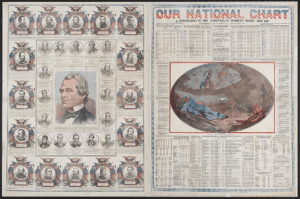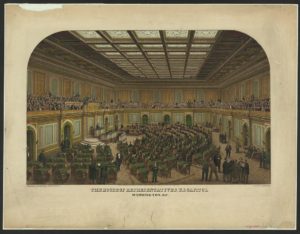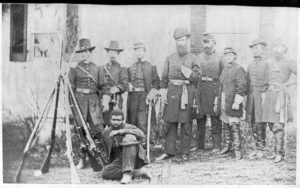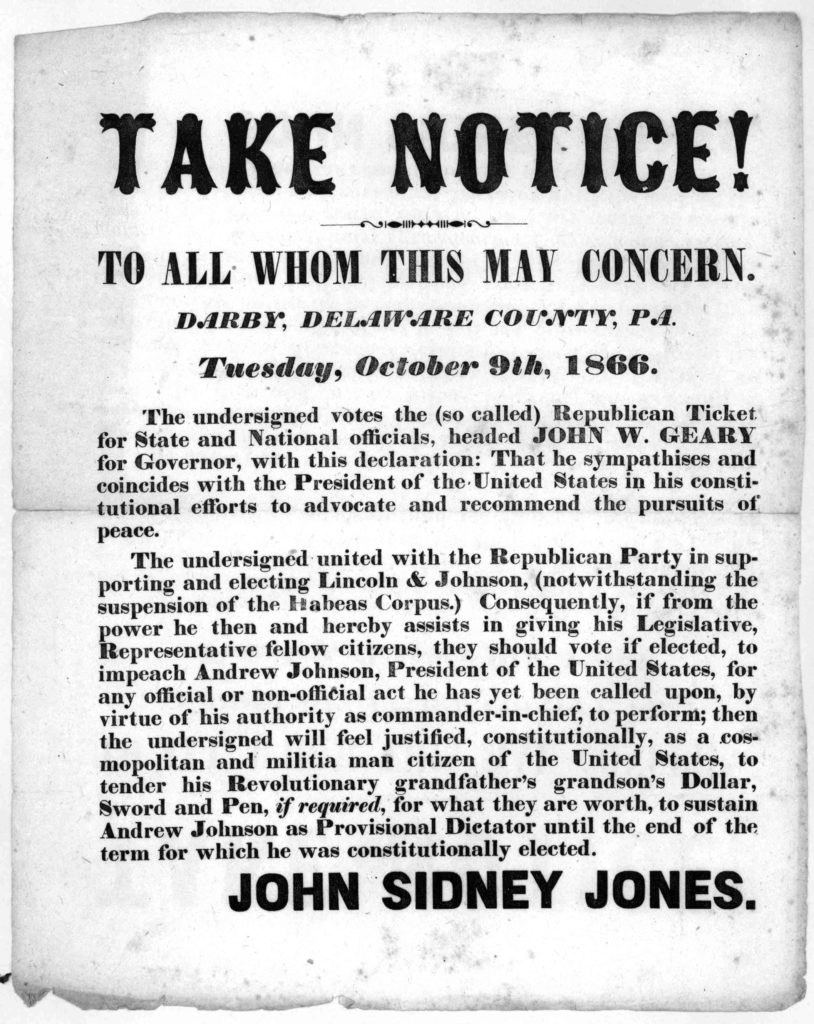Back in 1866 Henry J. Raymond was a U.S. Congressman from New York and publisher of The New-York Times. Mr. Raymond was a moderate Republican, who generally favored President Andrew Johnson’s reconstruction policy of readmitting Southern states to the Union and Congress with as few federal prerequisites as possible. The 1866 midterm elections could be seen as a referendum on President Johnson and his policies vis-à-vis the more radical Republican Congress. 150 years ago today Mr. Raymond’s paper predicted state elections in Pennsylvania and Indiana the next day were not going to be favorable to the president. One of the main problems was that to support the president meant a vote for Democrats.
From The New-York Times October 8, 1866:
The State Elections To-morrow – Probable Results and their Causes.
The elections in Pennsylvania and Indiana take place to-morrow. A Governor and other State officers are to be chosen in the former, and members of the Fortieth Congress in both. The canvas has been active and vigorous – marked by much more of feeling and bitterness than usual; and the result is of a good deal of importance. It is scarcely accurate to say that the issue, as between the President’s plan of reconstruction and that of Congress, has been clearly made and distinctly tried, – because many side issues, quite foreign to this, such as the New-Orleans riot, the President’s Western tour, the nomination and appointment of Copperheads to office, &c., have been brought into the canvas, and have had a controlling influence upon public sentiment. Nevertheless, in a general way, the President’s policy is upon trial, and will be indorsed or condemned by the people at the polls.
We have no doubt that the verdict will be adverse. We look for the defeat of CLYMER in Pennsylvania by at least 20,000 majority, and a similar, though perhaps less decisive, result in Indiana. In both States, more probably in the latter alone, the Republicans may lose two or three members of Congress, but the substantial victory will remain in their hands.
This is not the time for a detailed inquiry into the causes of such a result – though that time will come. We do not believe it due to any inherent injustice or unsoundness in the main feature of the President’s policy – the early restoration of the Union by the admission into Congress of loyal members from loyal States. But in our judgment, it will be due, in a very large degree, to the fact that this policy has been identified, in the public mind, with the Democratic Party and the secession sentiment in the South – and that it’s success at the polls involves the return of the Democratic Party, as organized and directed during the war, to place and power. In Pennsylvania the only way in which that policy can be sustained at the polls, is by electing CLYMER as the Democratic candidate over GEARY to be Governor; and in Indiana, as well as in Pennsylvania, Democratic nominees for Congress must be elected over Union candidates and Republicans. The issue is between these two parties. There is no National Union organization in the field … The Philadelphia Convention has disappeared from the contest. …
Nothing could be more unwise or preposterous than to ask Union men of any sort to support such a candidate as CLYMER in opposition to such a man as GEARY. The one fought for the Union, with ability and distinction, through the whole war; the other opposed the Government, denounced its action and aided the Democratic Party in its efforts to embarrass and defeat its measures. CLYMER was identified, thoroughly and wholly, with the Democratic Party, … To present him and that party as the special representatives and sole champions of the President’s policy, was to saddle it with a burden which no policy, however wise and just, could be reasonably expected to bear. …
Matters have been so mismanaged, not only in Pennsylvania, but throughout the North, that support of the President’s policy of Restoration involves a return of the Democratic Party to power; and that price the people will not pay. They have no faith in that party … They do not believe … that it cares for the liberties or rights of the enfranchised slaves, or sympathizes with efforts to elevate the character and improve the condition of the great mass of the people. They regard it as utterly selfish … [The electorate would rather risk the continued exclusion of the South from Congress than a return of power to Democrats. Radicals will win tomorrow and in other states later on]
I was surprised that the Times could put a number on Mr. Geary’s margin of victory. According to Wikipedia: “The first known example of an opinion poll was a local straw poll conducted by The Aru Pennsylvanian in 1824, showing Andrew Jackson leading John Quincy Adams by 335 votes to 169 in the contest for the United States Presidency. Since Jackson won the popular vote in that state and the whole country, such straw votes gradually became more popular, but they remained local, usually city-wide phenomena.” Wikipedia then jumps to the first national survey in 1916. One of the internet sources that says that the term “straw vote” has been used in print since 1866 is barrypopik.com, which mentions a report with a small sample size: “1866 Cleveland (Ohio) Leader 6 Oct. 4/2 A straw vote taken on a Toledo train yesterday resulted as follows; A. Johnson 12; Congress, 47.”
I don’t know how the Times came up with its numbers, but it’s prediction was quite accurate, as can be seen in the October 10, 1866 issue of The New-York Times, which gave Geary a nearly 20,000 majority. Today Wikipedia says 17,000.
One Pennsylvania citizen proclaimed that he somewhat grudgingly voted Republican:




